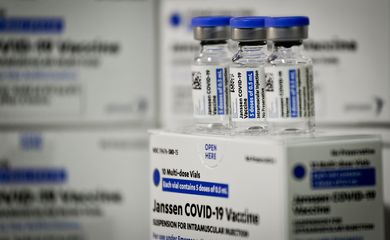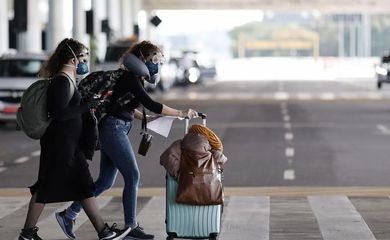Fiocruz sees risk of importation of influenza cases from the state of Rio

The Oswaldo Cruz Foundation (Fiocruz) alerted large urban and tourist centers to the risk of importing cases of influenza A, which were observed in the state of Rio de Janeiro, both in children and in the adult population, among the records of acute respiratory syndrome severe (SRAG) referring to epidemiological weeks 47 and 48.
The alert is in the InfoGripe Bulletin released today (9) by Fiocruz and is aimed especially at places with low adherence to non-pharmacological measures to reduce the transmission of covid-19. Epidemiological Week 48 covers the period from November 28th to December 4th, and the investigation is based on data entered in SivepGripe until December 6th.
According to the publication, the national chart indicates an increase in cases of SRAG in all age groups below 60 years. The occurrence is more evident in the age group from children to young adults in the ranges up to 9 years old, from 10 to 19 years old and from 20 to 29 years old. InfoGripe's coordinator, Marcelo Gomes, points out that, although in the age groups between 30 and 59 years the growth is “relatively light”, it is consistent, which reinforces the need for care.
“In the case of children (up to 9 years old), the laboratory results associated with these cases show a predominance of respiratory syncytial virus (RSV), which follows the trend of an increase in SARS in this age group. In other age groups, however, cases of SRAG remain mostly associated with Sars-CoV-2 (covid-19) with the exception of the state of Rio de Janeiro, which showed the presence of the influenza A virus both in children and in the adult population.” , highlights the newsletter.
Fiocruz draws attention to the finding that none of the 118 health macro-regions show signs of extremely high SRAG. Among these, only nine, located in Minas Gerais, Pará, Paraná and São Paulo, have a very high level. Since 2020, 1,703,956 cases have been registered, with 994,887 referring to the epidemiological year 2021, 698,986 (70.3%) with positive laboratory results for some respiratory virus, 162,768 (16.4%) negative, and at least 63,172 (6, 3%) awaiting laboratory results. In the positives, 0.0% influenza A, 0.0% influenza B, 1.2% respiratory syncytial virus (RSV) and 96.4% Sars-CoV-2 (covid-19).
"In the consolidated time series of the incidence of SARS cases and deaths per covid-19, it is observed that, with the advance of vaccination coverage in the adult population, the age groups of 60 years or more (60-69, 70-79 and 80 years or more) returned to be the groups with the highest weekly incidence of cases and deaths from SARS with a positive RT-PCR result for Sars-CoV-2”, revealed Gomes.
In Fiocruz's assessment, another relevant fact is the practically absolute predominance of detection of Sars-CoV-2 among SRAG cases with laboratory results in the country. The picture remains among adolescents aged 10 to 19 years, "but with a reduction in general positivity and a greater relative presence of positive cases for rhinovirus". In children up to 9 years old, which is the age group with the lowest positivity, in 2021, there was a significant advance in cases of respiratory syncytial virus (RSV), with weekly records higher than those observed for Sars-CoV-2. “From July onwards, there has been a gradual increase in positive cases for other respiratory viruses, such as adenoviruses, bocaviruses, parainfluenza 3, influenza 4, among others, which are added to the presence of RSV and rhinoviruses in these children”, he added.

growth sign
Among the 27 federative units, Acre, Amazonas, Amapá, Bahia, Espírito Santo, Maranhão, Mato Grosso do Sul, Pará, Rio de Janeiro, Rio Grande do Norte, Rondônia and São Paulo showed signs of growth in the long-term trend (latest six weeks) until Week 48. The states of Alagoas, Ceará, Mato Grosso and Pernambuco, Piauí, Paraná and Rio Grande do Sul, Santa Catarina and Sergipe and Tocantins showed signs of a decline in the long-term trend. Alagoas showed signs of growth in the short-term trend (last three weeks), but compatible with the oscillation around a stable value.
"Different from what was pointed out in previous updates, although in many states it is still a slow growth, the data by age group suggest that it is a sustained growth and it is recommended to reassess measures to prevent the transmission of respiratory viruses, especially in relation to events of the end of the year to avoid a worsening of the epidemiological scenario”, says the researcher.
Fiocruz's InfoGripe Bulletin also informs that in Acre, Amazonas and Amapá, Bahia, Espírito Santo, Maranhão, Pará and Rio de Janeiro, Rondônia and São Paulo, there are strong signs of growth in the long-term trend and that, in Amapá, Bahia, Espírito Santo, Pará and Rio de Janeiro and in Rondônia, the sign is of growth in the short-term trend (last three weeks). In Mato Grosso do Sul and Rio Grande do Norte, the sign of growth is moderate in the long-term trend. In Rio Grande do Norte there are also signs of growth in the short-term trend.
Text translated using artificial intelligence.





